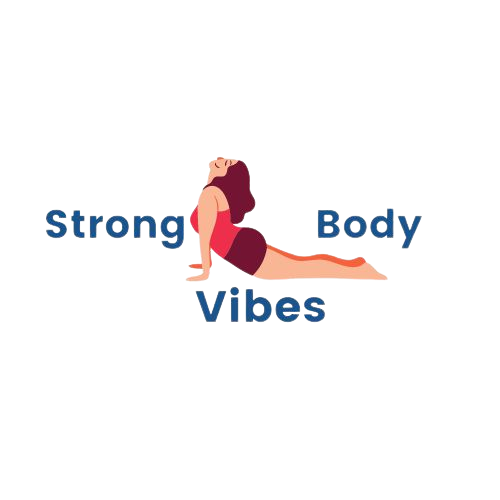If you often find yourself skipping out on physical activity due to anxiety, you may be interested in a new study that links anxiety sensitivity to decreased physical activity. Anxiety sensitivity refers to the fear of arousal-related sensations, such as a racing heart or shortness of breath, and it can lead to the avoidance of physical exercise.
In a meta-analysis of 43 different studies, researchers found a negative correlation between anxiety sensitivity and physical activity. The study suggests that individuals with higher anxiety sensitivity tend to engage in less physical activity compared to those with lower anxiety sensitivity.
Additionally, the intensity of physical activity was found to impact the strength of this association. While the study cannot prove causation, it highlights the importance of understanding the relationship between anxiety and physical activity.
Study Reveals Link Between Anxiety Sensitivity and Decreased Physical Activity
Anxiety sensitivity refers to the fear of arousal-related sensations, such as a racing heart or shortness of breath, and this fear has been found to be linked to decreased levels of physical activity. Previous research on the topic has provided contradictory findings, making it important to conduct a meta-analysis to gain a better understanding of the relationship between anxiety sensitivity and physical exercise.
This article will explore the findings of a recent study that investigated this link, as well as the impact of exercise intensity on the relationship. Additionally, the limitations of the study will be discussed, along with suggestions for future research and implications for individuals with high anxiety sensitivity.
Explanation of Anxiety Sensitivity
Anxiety sensitivity can be defined as the fear of arousal-related sensations commonly associated with anxiety disorders. This fear may manifest as a dread of physical symptoms such as an elevated heart rate, sweating, or breathlessness.
It is important to note that anxiety disorders affect a significant portion of the population, with over 40 million people in the United States alone experiencing these conditions. The excessive concern associated with anxiety disorders can interfere with daily activities and lead to physical signs such as agitation, a tense or quickly exhausted sensation, trouble focusing, muscle tightness, or difficulties sleeping.
Previous Research on Anxiety Sensitivity and Physical Exercise
Earlier studies investigating the association between anxiety sensitivity and physical exercise have provided conflicting findings.
However, these studies have identified several harmful behaviors associated with high anxiety sensitivity, one of which is avoiding physical activity. Individuals with high anxiety sensitivity often engage in hazardous coping mechanisms, such as substance use, as a means to deal with their anxiety.
It is not surprising that they also avoid physical activity due to the fear of arousal symptoms that exercise can trigger, such as an elevated heart rate and perspiration.
Purpose of the Study
The purpose of the study was to investigate the relationship between anxiety sensitivity and physical activity, as well as to identify the circumstances under which anxiety sensitivity leads to avoidance of physical exercise.
By conducting a meta-analysis of previous research papers, the study aimed to provide a comprehensive understanding of the link between anxiety sensitivity and decreased physical activity.
Meta-Analysis Methodology
The researchers conducted a search of nine major research databases to find relevant papers for their meta-analysis. These papers had to meet specific inclusion criteria, including the use of approved anxiety sensitivity tests and the measurement of physical activity.
In total, 43 different research papers were included in the final analysis, consisting of data from 10,303 individuals.
Sample Size and Data Analysis
The large sample size allowed for robust data analysis to explore the relationship between anxiety sensitivity and physical activity. Statistical techniques were employed to assess the strength and direction of the relationship between these variables, providing valuable insights into their connection.
Findings from the Meta-Analysis
The meta-analysis revealed a significant negative correlation between anxiety sensitivity and physical activity. In other words, individuals with higher anxiety sensitivity tended to engage in less physical activity compared to those with lower anxiety sensitivity, who were more likely to be physically active.
The analysis also discovered an inverse relationship between cognitive issues, such as difficulties focusing, and physical activity levels. However, no significant connection was found between social problems and physical activity.
Impact of Exercise Intensity on the Relationship
The study also examined the impact of exercise intensity on the relationship between anxiety sensitivity and physical activity. It was found that low-intensity exercises, such as walking, had no discernible effects on the association between anxiety sensitivity and physical activity.
However, as the intensity of physical activity increased, the negative link between anxiety sensitivity and physical activity became stronger. This suggests that individuals with high anxiety sensitivity may find it particularly difficult to engage in more strenuous activities, such as vigorous exercise.
Limitations of the Study
While the meta-analysis provided valuable insights into the relationship between anxiety sensitivity and physical activity, it is important to acknowledge the limitations of the study. The cross-sectional design of the research prevents the establishment of causation between anxiety sensitivity and decreased physical activity.
Additionally, the study primarily focused on general physical activity levels and anxiety sensitivity, without exploring other psychological factors that could play a role in this relationship.
Future Research and Implications
Moving forward, it is essential to investigate fear-mediated avoidance as a potential explanation for the lower physical activity levels among individuals with high anxiety sensitivity. Understanding whether anxiety-sensitive individuals avoid physical activity due to their fear of arousal sensations brought on by exercise could provide valuable insights for developing strategies to encourage physical activity in this population.
Additionally, further research should explore the effectiveness of different interventions aimed at promoting physical activity among individuals with high anxiety sensitivity.
In conclusion, the study reveals a link between anxiety sensitivity and decreased physical activity. Individuals with high anxiety sensitivity tend to engage in less physical activity, potentially due to their fear of arousal-related sensations.
The relationship between anxiety sensitivity and physical activity is influenced by the intensity of exercise, with higher intensity activities being particularly challenging for anxiety-sensitive individuals. While the study has certain limitations, it provides a foundation for future research and offers implications for promoting physical activity among individuals with high anxiety sensitivity.

